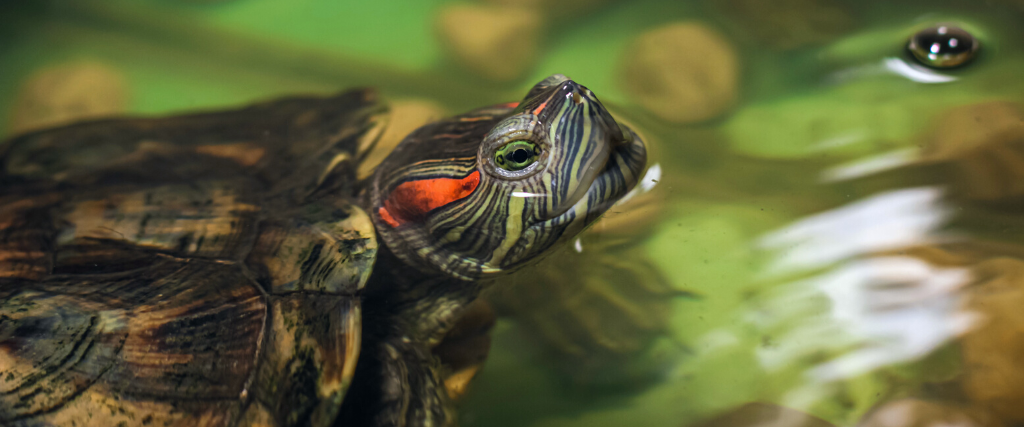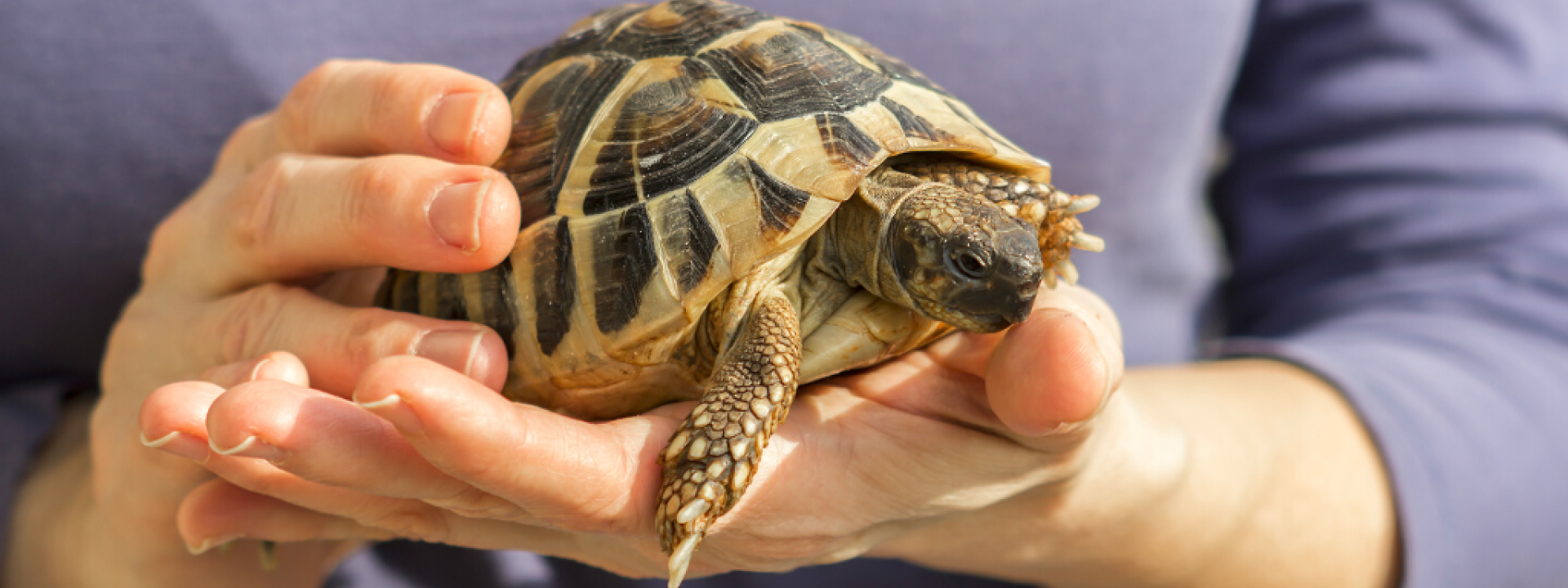As veterinarians, it's our job to ensure prospective exotic pet owners know how to properly care for and distinguish between certain animals. The last thing we’d ever want is for someone to adopt a pet and then lose them due to improper care!
Today, we're going to look at the differences between turtles and tortoises, so you can decide which one is right for you. Both are reptiles that fall into the Chelonian order, which includes turtles, tortoises, and terrapins. However, there are significant differences between them. Here are six key differences between turtles and tortoises that should help you decide which one is right for you. Learning to distinguish between the two will also help you provide proper care for whichever reptile you adopt.
1. Turtles Primarily Live in Water, While Tortoises Live on Land
The first major difference between turtles and tortoises is where they live. Turtles live or spend most of their time in the water, either in lakes, rivers, or oceans. Tortoises, however, live on land, usually in deserts, forests, or grasslands. Unless they are bathing or drinking, tortoises avoid water because they can’t swim. Turtles are much more suited to live in and on the water.
When choosing a new pet or observing a Chelonian in nature, looking at their feet will help you determine whether the animal you see is a turtle or a tortoise. Tortoises’ feet resemble elephant feet. They’re stumpy with scaly toes and short claws that aid in digging and climbing. Turtles have either webbed feet or flippers. Semi-aquatic turtles that spend time in water and on land have webbed feet with long claws. Fully aquatic turtles, like sea turtles, have flippers.

2. Turtles Are Omnivorous, and Tortoises Are Herbivorous
Turtles are omnivorous animals, meaning they eat meat and plant matter, while tortoises are herbivorous, meaning they eat only plants.
Turtles typically eat:
- Insects
- Fish
- Worms
- Crustaceans
- Fruits
- Vegetables
- Algae
- Grasses
A tortoise’s diet consists entirely of plants, including grass, leaves, and fruits.
3. Turtles Shed Their Scutes; Tortoises Don’t
Turtles shed their scutes in order to grow new ones. Tortoises don't shed their scutes, but they do grow new ones. “Scute” refers to a turtle or tortoise’s shell. It consists of two parts: the dermal bone layer and the underlying periosteum. The dermal bone layer is hard and durable, while the periosteum is softer and more flexible. The periosteum covers most of the dermal bone layer but leaves an area exposed at either end of each scute.
As they grow and age, turtles shed their scutes to make room for new ones. Tortoises, however, do not shed their scutes. Instead, their shells grow constantly without shedding. Over time, this creates a layered appearance and provides protection from predators.
4. Turtles Have Streamlined Shells, While Tortoises' Shells Are More Dome-Shaped
Turtles usually have relatively flat, streamlined shells that help them swim and dive more efficiently. They are smooth and gently curved.
Tortoises' shells are more dome-shaped, which provides more protection from predators. They’re usually much bumpier and thicker than turtles’ shells.
There are a few exceptions to this rule, though, including certain mud turtles and box turtles, which have more dome-shaped shells.
5. Tortoises Tend to Have Much Longer Lifespans Than Turtles
Turtles typically live between 5 and 50 years, while tortoises can live up to 200 years. In fact, a Seychelles giant tortoise named Jonathan celebrated his 190th birthday in 2022 and holds the Guinness World Record for being the oldest living chelonian. Their longevity is linked to their size and the fact that tortoises live in much more predictable environments, while turtles often have to deal with changing weather. Research has also found that tortoises have gene variants linked to immune response, cancer suppression, and DNA repair. These variants aren't present in vertebrates with shorter lifespans.
6. Tortoises Are Usually Found in Warmer Climates, While You Can Find Turtles All Over The World
Both turtles and tortoises have wide ranges. In fact, turtles are on every continent except Antarctica, and Antarctica and Australia are the only continents without tortoises. Most species of tortoises are native to places with warm climates, like Africa, but turtles are nearly everywhere. Sea turtles, in particular, spend their lives in oceans spanning the globe.

Fun Fact! Tortoises Are Turtles
Despite their differences, all tortoises are turtles . However, not all turtles are tortoises. Both have shells, which puts them in the order Chelonia. Collectively, this group is known as turtles, but individual species have their own names. For this reason, tortoises are a type of turtle. This also explains why some exceptions to the general rules outlined above exist.
Closing Thoughts
When deciding between a turtle and a tortoise, it all comes down to personal preference. Both turtles and tortoises make great pets, and with the right care and attention, they can live long, healthy lives. The key is ensuring they have the proper habitat and receive appropriate routine and sick care from a veterinarian. Whether you choose a turtle or a tortoise, you'll surely have an amazing companion for years to come.

